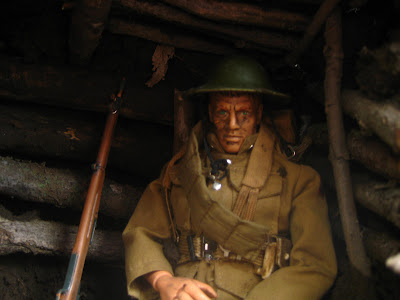 In part one of the entry series, we saw how trench warfare became the main method of fighting on the western front during the First World War. Now, we will not only see what took place, but what day-to-day life was like for the soldiers in the trenches.
In part one of the entry series, we saw how trench warfare became the main method of fighting on the western front during the First World War. Now, we will not only see what took place, but what day-to-day life was like for the soldiers in the trenches.
Home Sweet Home. Soldiers tried to find what little shelter from the elements that they could, but the constant shelling and bombing meant that the shelter had to be "bomb-proof". The most common type of shelter was, therefore, a small cave-like hole dug out of the forward side of the trench. These were often nick-named "worm holes".

Some underground shelters had log-lined walls to hold the dirt back.

What's For Lunch? All meals were usually pre-packaged, or was prepared in the rear lines and brought it to the front lines in buckets. Cooking in the front lines was prohibited, as smoke from cook fires could attract grenades and mortar fire. The most common meal for the Allied soldiers was mass-produced canned corn beef and potatoes. This was often accompanied by tea if you were in the British Army.


A soldier keeps watch over the trench lines after a light snowfall.

As we bring this dual-part entry to a close, we hope that you all have enjoyed this entry series! Thank you all for the comments as we return to the blog-world, and we shall be updating soon.

This reminds me so much of " The Lost Battalion "
ReplyDeleteExcellent!
I'm a G.I Joe fan too. I'm doing the same thing as you on my blog.
ReplyDeleteVery effective and interesting